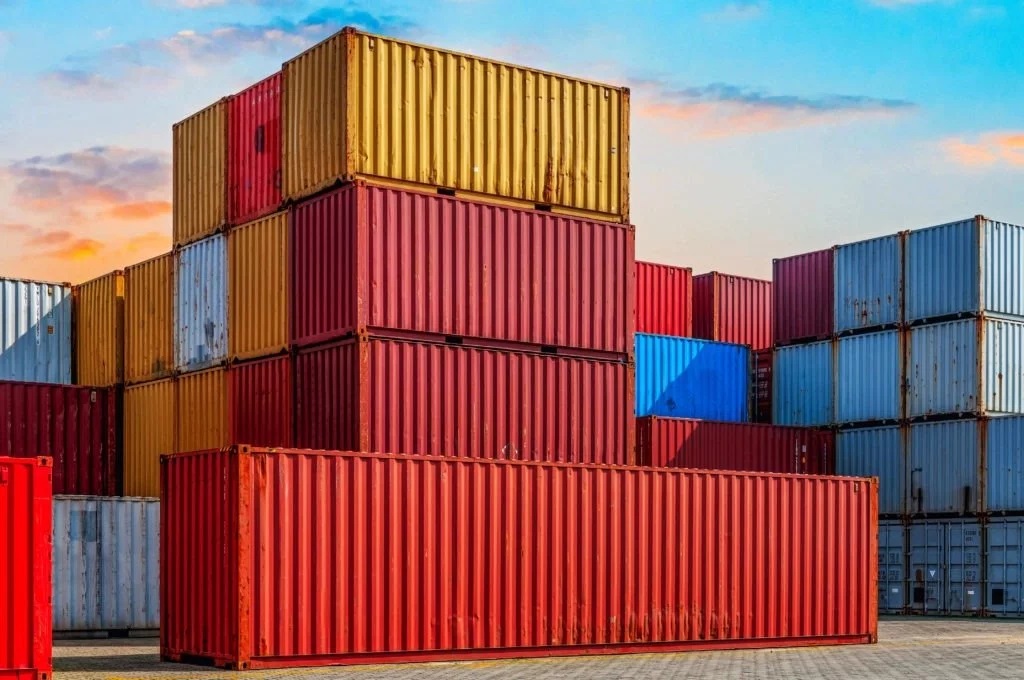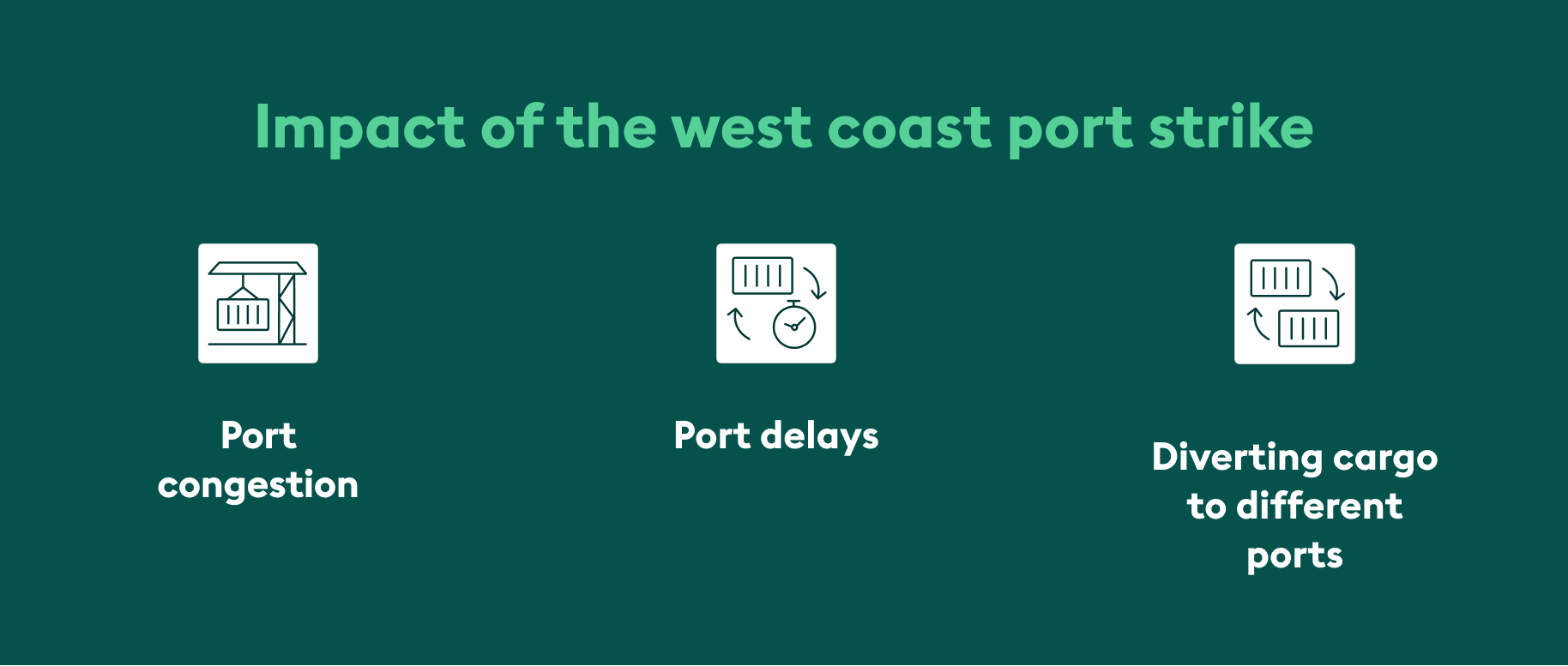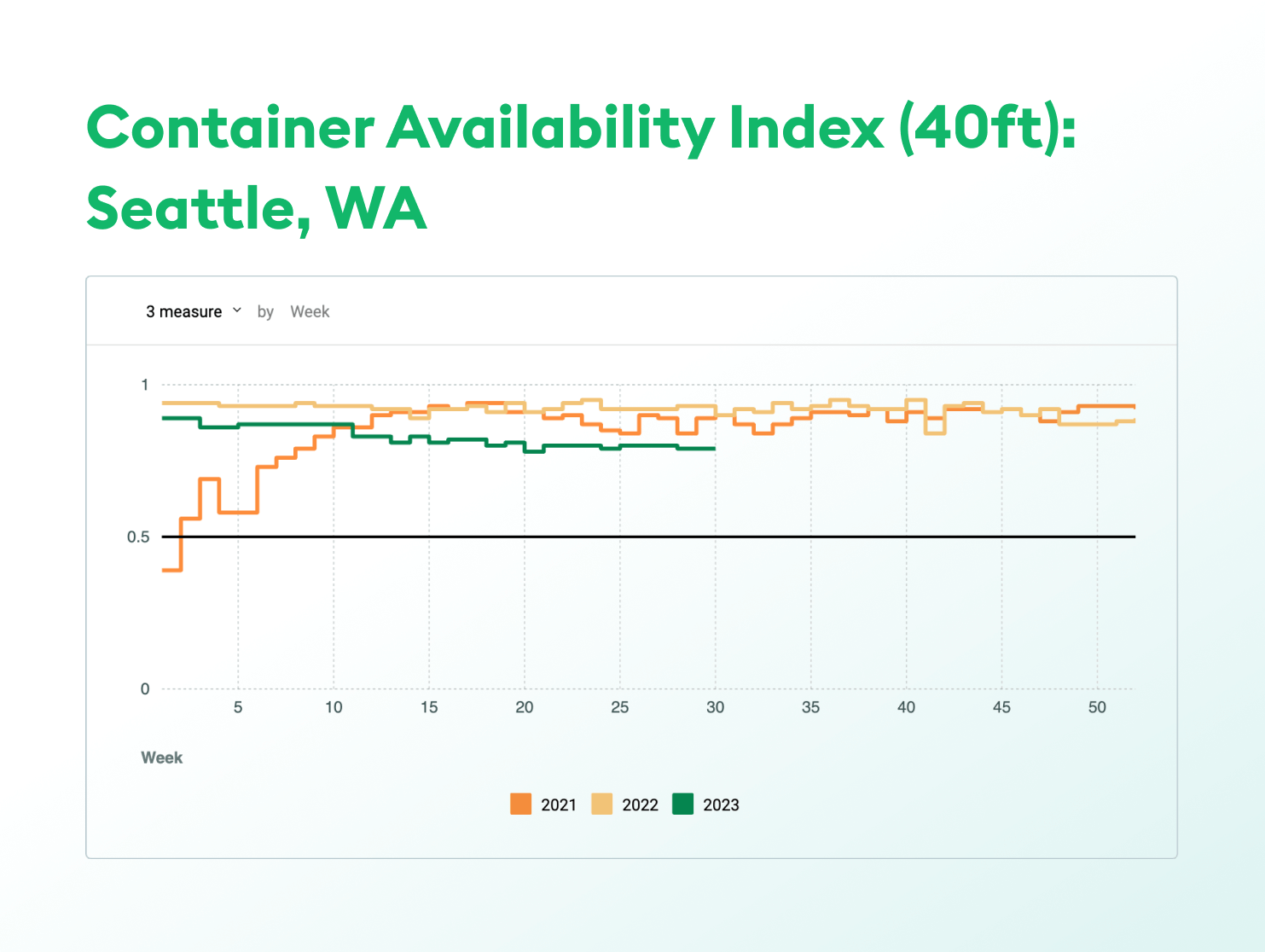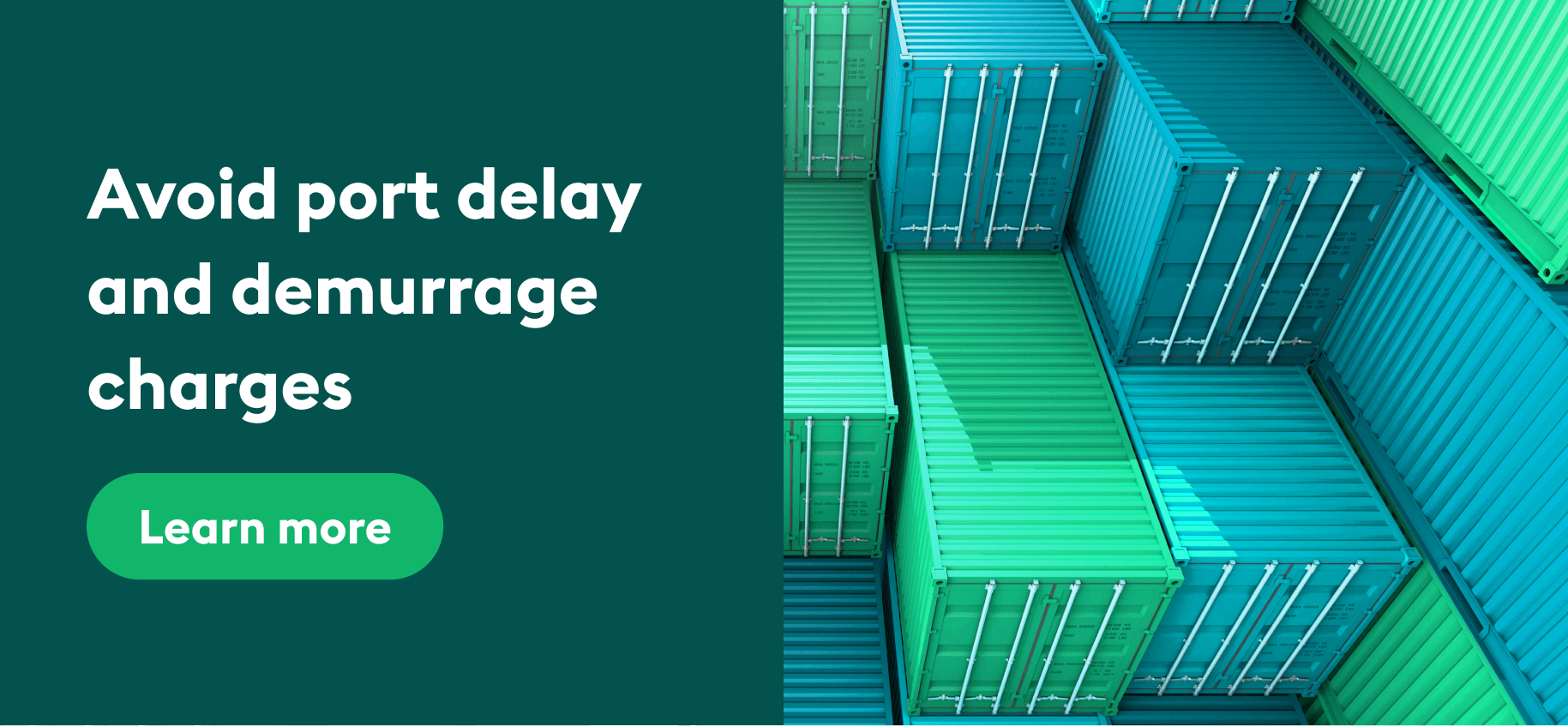The West Coast port negotiations in the US finally came to an end. However, the dockworkers of Canadian ports have begun their strike. Read this blog to find out about these strikes and their impact.
The West Coast port strike in the US finally came to an end after a year long negotiations. The International Longshore and Warehouse Union (ILWU) and Pacific Maritime Association (PMA) decided on a 6-year tentative agreement. However, this is not the end of strikes on the North American West Coast, as port workers in Canada have also begun their strike for higher wages.
These continuous strikes have increased the vessel transit and dwell times at the West Coast ports – leading to port delays and congestion. And with the delays, demurrage and detention (D&D) charges are likely to pile up for shippers. While controlling the impact of these strikes is not in your hands, there’s an easy way you can avoid paying high D&D charges for your next shipment by using SOC containers.
SOCs are shipper-owned-containers that you can lease through our platform. When you lease containers from shippers, you’re under no obligation to pay demurrage and detention charges to carriers. We’ll discuss more about SOC containers later in the blog.
But if you already know how SOCs can help you avoid D&D charges, try our public search below to secure containers at competitive rates. Simply enter your pick-up and drop-off locations and click search. You can then pick from a list of 50,000+ containers from around 2500+ locations worldwide.
West Coast port workers begin strike in Canada
In the beginning of July 2023, unionized port workers in Canada’s western province of British Columbia went on strike.
This was after The British Columbia Maritime Employers Association (BCMEA) and the International Longshore and Warehouse Union Canada (ILWU Canada) failed to reach a deal to renew the industry-wide contract that expired in March.
The port strike has been primarily driven by labor disputes, with workers demanding better wages, protection from automation, and contract work.
Here’s what Christian Roeloffs, Co-founder and CEO of Container xChange has to say about the Canadaian strikes:
“The strike could have a significant impact on the ports of Vancouver and Prince Rupert, which are crucial gateways for Canada’s foreign trade, especially with Asia. These ports handle a substantial portion of Canada’s imports and exports. The disruption caused by the strike can lead to delays, congestion, and inefficiencies in the movement of cargo, affecting various industries and businesses that rely on the smooth functioning of the supply chain.”
The Canadian Chamber of Commerce is estimating that more than US$600 million worth of cargo moves through the west coast Canadian ports each day.
Thus, the strike will not only affect the businesses relying on the timely movement of goods but will also have wider implications for the Canadian economy – just like it did on the US economy during the West Coast port strike in the US. Read on to find more.

US West Coast port negotiations: Background on ILWU strike
Since July of last year, more than 22,000 dockworkers at nearly 30 ports across the West Coast had been working without a contract. This expiration of contract lead to uncertainty and tensions among the dockworkers.
The dockworkers – represented by ILWU had been negotiating their new contract with the port management for a year. But the dockworkers were not satisfied with the conditions of the agreement. As a result, they walked out of their jobs and many did not show up for work. This caused occasional closures at ports due to lack of sufficient labor.
Through the strike, the dockworkers were demanding better pay, additional benefits and protection from automation. The labor dispute also comes amid record profits earned by port operators. The ILWU claims that port operators made $510 billion during the pandemic but these profits have not been passed down to dockworkers in the form of increased pay.
After negotiating for months, the ILWU and the PMA finally came to a tentative 6-year agreement in June. Read on to find out the latest developments on the ILWU strike.
Latest updates on West Coast port labor negotiations in the US
After a year of failed negotiations between ILWU and PMA, the Biden administration had to step in amid the rising concerns of congestion at the US ports. President Biden’s Acting Labor Secretary Julie Su was in communication with both the parties and assisted in finalizing the agreement.
On June 15, 2023, the two parties concluded extended negotiations on a labor contract and announced a tentative 6-year agreement. However, this agreement is still subject to ratification by both parties, which could take another few months to complete.
With the new agreement, the dockworkers received a 32% wage increase and a one-time $70 million bonus. The rest of the details of the agreement have not been made public yet.
Although the update looks positive, the strike impacted the West Coast ports significantly, resulting in post congestion and delays. Let’s take a look at the consequences of the strike in the next section.
Impact of the port strike on the US economy
The port strike has had a significant impact on the US shipping industry. Here are a few of those:

-Port congestion: Port congestion happens when a vessel arrives at a port in order to load or unload cargo, but is unable to berth. Therefore it has to wait outside at the anchorage. One of the main reasons for congestions at ports is lack of labor – which is what happened to the west coast ports resulting in congestions.
-Port delays: Another impact is port delays. Even if the vessels arrive at the port on time, the loading and unloading of containers can take a lot of time, causing delays at ports. These delays also happen mainly due to lack of labor on ports.
-Diverting cargo to different ports: Due to consistent port delays and congestions – shippers often divert their cargo to other ports to save demurrage and port charges. This is what happened in the US as well. The Port of New Jersey and New York on the East Coast surpassed the Port of Los Angeles to become the busiest port in the US.
|
According to our July-edition of “Where are all the containers” report, the East and Gulf Coast’s combined share of Asia imports has grown from 29% to 44% from January to May 2023. Whereas, the West Coast’s share of US imports from Asia has dropped from 71% in 2013 to 56% during that same period. |
Even though the shippers moved to the East Coast, there is still congestion at the West Coast ports costing thousands of dollars for the shippers! We’ll discuss how you can avoid paying these charges, but first let’s look at the most congested port on the US West Coast.
Port of Seattle tops the list of West coast port congestion
Among the ports along the West Coast, such as Los Angeles, Long Beach, and Oakland, the Port of Seattle has emerged as the most severely affected by congestion issues.
The slowdown in moving containers on and off vessels has delayed containerships. The average turnaround time for containerships at Seattle has been up to 2.5 days in the past few months, nearly four times the average.
Let’s understand the congestion at the Port of Seattle through the data we’ve gathered from our Container Availability Index (CAx).
With CAx, you can check container availability in major ports worldwide.
- CAx values above 0.5 mean that more containers with cargo enter
- CAx values below 0.5 mean more containers with cargo leave a specific port
- High CAx values over a time period of multiple weeks indicate a surplus of equipment at a specific port.

As you can see from the graph above, CAx values of the Seattle port is well above 0.5. This means that more containers are entering all these ports than moving out – indicating a container surplus at the port.
As we’ve already seen, congestion at ports can cause supply-chain bottlenecks and the imposition of additional fees such as port congestion surcharge and demurrage charges. While these factors are not in your hands, there’s a way you can avoid paying these high fees. Find out more in the next section.
Lease SOC containers to avoid demurrage & detention charges
Although there are a few ways to avoid D&D charges– using SOC containers instead of COCs is one of the best ways.
SOC containers are owned by shippers. So, when you lease containers from shippers, you’re under no obligation to pay demurrage and detention charges to carriers. SOCs grant you a lot more freedom and independence than COCs do.
Let’s imagine you have to move cargo from India to the port of Seattle in the US. We’ve already seen that it is one of the most congested ports in the US currently. If you were moving your cargo through COC containers – you’d have to pay hefty demurrage fees because the containers would be stuck at the port. These fees can cost you hundreds of dollars everyday!
On the other hand if you lease SOC containers, you simply use them for one-way use and return them to your partner’s depot at the port of destination. Most of the time, you don’t even have to pay any per diem charges on top of the pick-up charges. This is because most container owners aren’t only interested in a quick turnaround. They, in fact, want you to just reposition their equipment.
This way, even if the containers are stuck at ports, you won’t have to pay the delay charges or detention fees! But where do you find trusted suppliers to lease SOC containers from? Right here on Container xChange.
Avoid D&D charges by leasing SOCs on Container xChange
The traditional process of finding partners for SOC shipments involves steps such as background checks, negotiating rates and terms, and setting up legal agreements.
However, this can be a tiresome and time-consuming process. Container xChange makes it easier for you with our online leasing platform. On our platform you can:
- Connect with 1500+ vetted members in 2500+ locations globally
- Choose from 50,000+ containers
- Compare the deals offered by different suppliers and choose the best fit for your needs
- Make safe and secure payments through the xChange wallet
- Make deals with 100% price transparency and 0% commission
All this on one single platform! Want to know more about how Container xChange can help you improve your business and save money on D&D charges? Then click on the banner below and get a free demo to see how this works first-hand!
West Coast port negotiations: Common FAQs
What is the largest port on the west coast?
The port of Los Angeles is the largest port on the west coast. The port mainly handles cargo from Transpacific trade. However, it’s now experiencing a 14.59% decrease in container volumes.
Why are B.C. port workers on strike?
The port workers are on a strike because of labor disputes, workers demanding better wages, protection from automation and the use of contract work.
What is the latest update on west coast port negotiations?
The latest update on west coast port negotiations is that on June 15, 2023, ILWU and PMA concluded extended negotiations on a labor contract and announced a tentative 6-year agreement.
What are the impact of port strike on the U.S. economy?
West coast port strikes have led to port congestion and port delays in several ports. This has further caused inefficiencies in the movement of cargo, affecting various industries and business.



